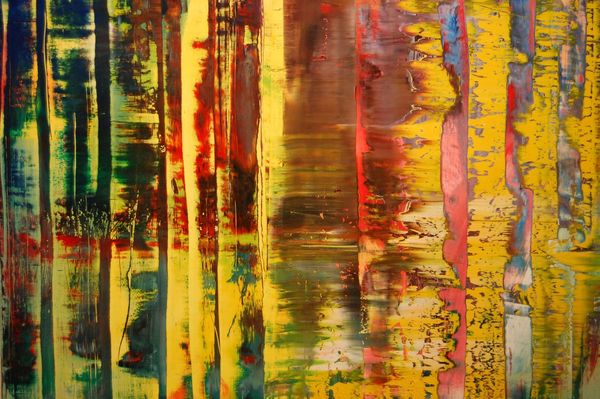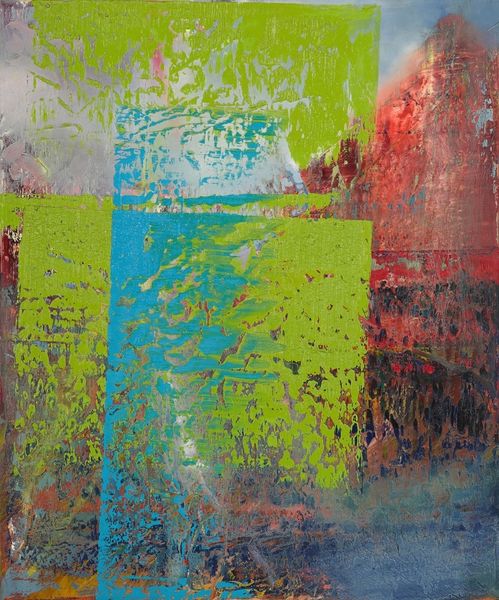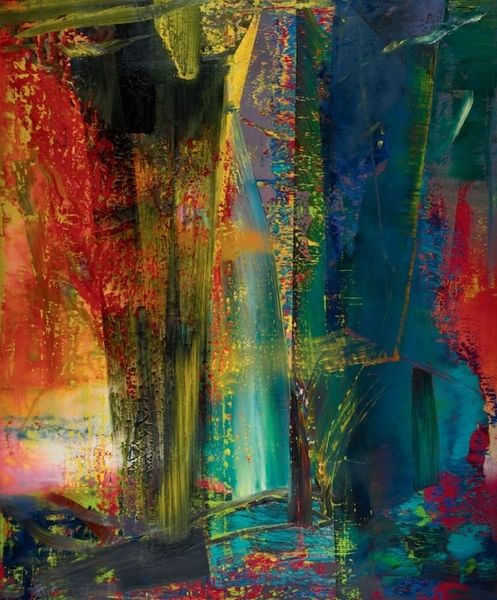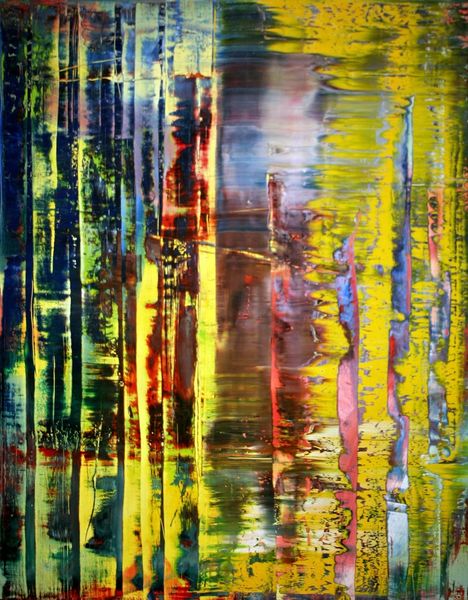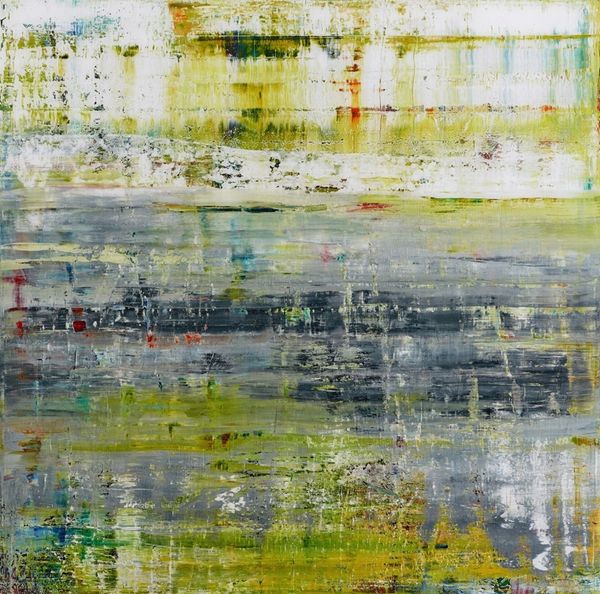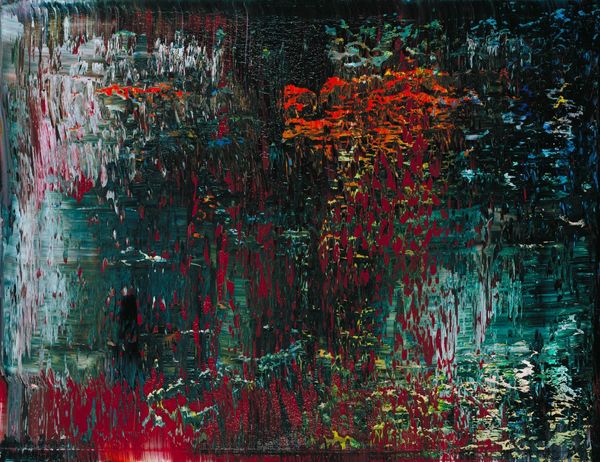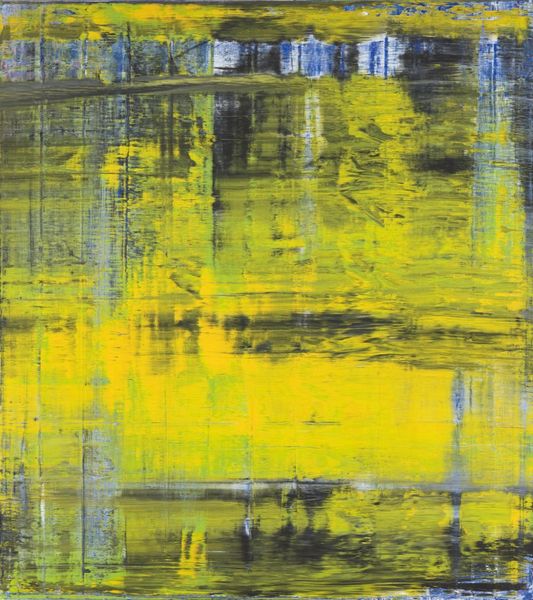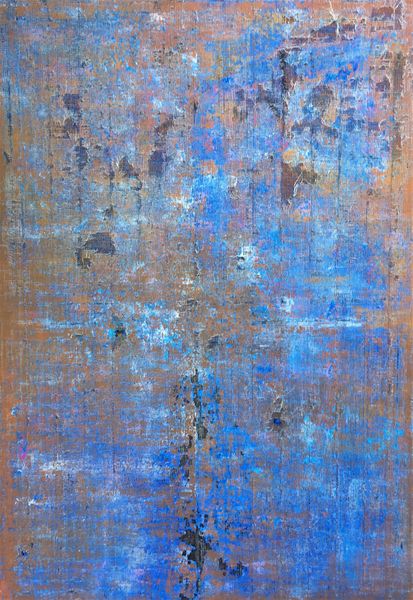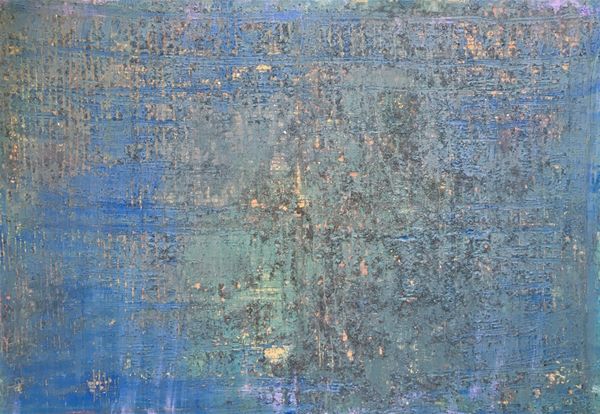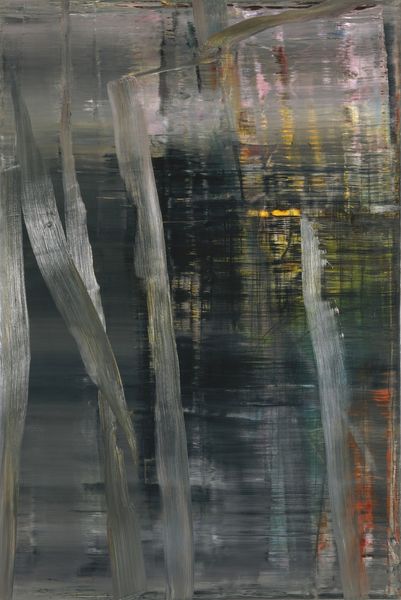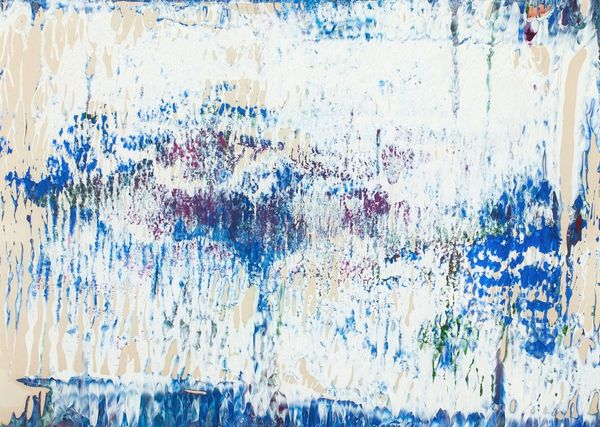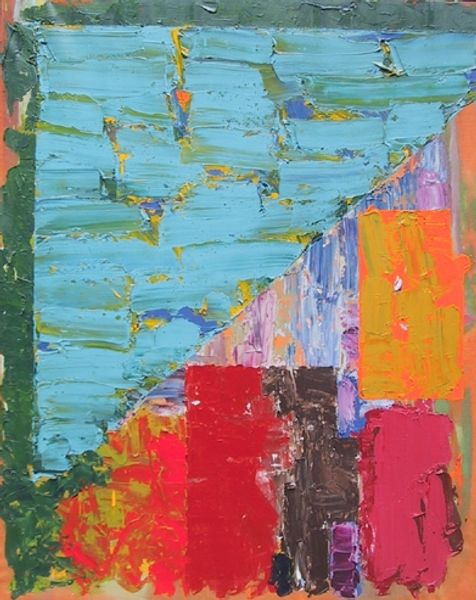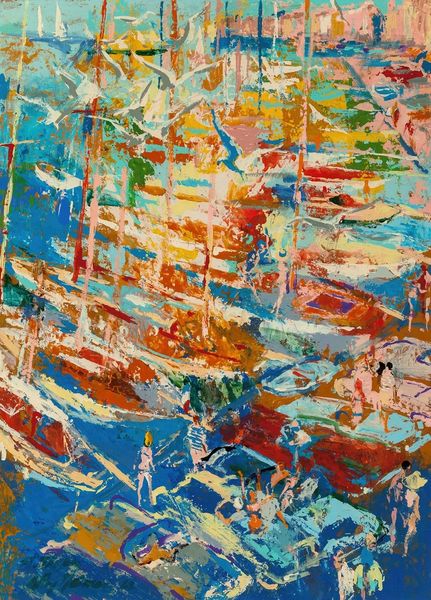
Copyright: Antonio Corpora,Fair Use
Curator: Welcome. Before us hangs Antonio Corpora’s 1986 acrylic painting, “Omaggio a Monet.” Editor: My initial impression is… turbulent. It’s as though a serene water lily pond is being viewed through a rain-streaked window, obscuring clarity yet heightening emotion. Curator: Indeed. Corpora's homage engages with the legacy of Monet, but filters it through an abstract expressionist lens. The painting’s diptych format invites us to consider each panel independently, yet their mirrored imagery suggests an integrated whole. Editor: I note the striking chromatic orchestration: primarily blues and greens are accented with abrupt punctuations of coral. Could these rust tones allude to pollution, industrial contamination impacting even Monet's beloved, idealized nature? Curator: Potentially. Considering Corpora’s place within the Italian art scene, his engagement with postwar reconstruction, this work offers layers of political context and discourse about modernization. The visible brushstrokes, a gestural testament to process, invite reflection upon human presence and intervention in natural environments. Editor: Let us examine the deployment of line and the layering. Notice how translucent washes coexist beside thicker, impasto segments; note also how they intersect— creating, almost, an entanglement of surface and depth, obscuring notions of perspectival recession. Is it a representational rendering, or a structural proposition? Curator: It is neither, precisely; it’s both simultaneously. He adopts and adapts landscape painting while dissecting and reforming it in adherence with an individual expressive methodology that also allows one to acknowledge larger collective contexts. Editor: Ultimately then, in assessing this painting as document or as object, what resides as Corpora’s most lasting gesture? Curator: It exists as both historical document and autonomous structure. Corpora masterfully synthesizes art-historical awareness alongside deeply individual expression—offering an articulation, ultimately, about art’s continued role. Editor: For me, while appreciating the painting’s formal tensions, its sociopolitical resonance is where its profundity lies. It prompts vital introspection upon our own relationship within ever transforming environments.
Comments
No comments
Be the first to comment and join the conversation on the ultimate creative platform.
